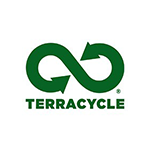What Happens to Trash After It’s Tossed?
Garbage pickup doesn't have to be a mystery. Get the facts and learn where it goes.

An Inside Look at Waste Sorting and the Trash Cycle
Unless you’ve chosen to live a zero-waste lifestyle, you have a hand in the 258 million tons of waste Americans produce each year. And once your rubbish is picked up from your home or business, you probably don’t give it too much thought. But those empty food containers and old magazines have a long way to go after disposal.
From the waste transfer station to landfill processing. Learn what happens to your garbage after you throw it away from the experts at Colorado College, TerraCycle and The 5 Gyres Institute.
Beyond the Bin: What Happens to Our Garbage and Recycling
How Is Garbage Collected for Processing?
Whether it's curbside trash pickup at your home or dumpster service at your business, we’re all familiar with this step in the trash cycle. A hauler picks up your trash and transports it to either a transfer station or a landfill. But you might be surprised by how far it travels.

"Depending on the location, it may be within a few miles of town or it may be transported 100 miles or more to the nearest licensed site."
How Are Trash and Recyclables Separated?
A waste transfer station accepts and sorts trash, recyclables and other materials before sending them to the appropriate destination – usually a recycling center or the landfill. In addition to recycling, the waste sorting step often helps to conserve natural resources since the heavy collection trucks don’t have to drive the longer distances to the landfill.
First, household trash is sorted to remove recyclable items like plastic bottles, paper and metal. This process is labor-intensive and workers where hazmat suits and face protection to avoid health risks.
In fact, the United States has recycled 93.9 million tons of waste as of 2018 and many states have mandatory recycling laws in place.
Once separated, recyclable materials are sent to nearby recycling centers to be prepared for reuse.
In some locations, items like furniture, bicycles and books in good condition can be sent to a secondhand store for reuse.
What Happens to Our Recycling?
Recyclable items separated at the waste transfer station are sent on to a recycling center. For expert insight about the recycling process, we talked to Brett Stevens, the Vice President of Material Procurement and Sales at TerraCycle.
“Many facilities use multiple sorting techniques to sort recyclables,” Stevens said. “This includes manual sorting by hand, and then putting the material down an optical or NIR (near infra-red) line to sort plastics by the polymer that they’re made of.”
After the materials are sorted, the “like” items are baled together. Then they’re ready to be converted into new materials, keeping reusable resources from the landfill.

"Materials are purchased by re-processors to sort materials further by color, density, etc. After a certain polymer is shredded down to a small size and washed, this becomes a commodity on the plastics market that can be purchased by any product manufacturer to be used as a raw material."
Many cities aim to increase their recycled materials as much as possible by incentivizing businesses and increasing the availability of recycling bins. For instance, businesses participating in the Phoenix Green Business Leaders Program have diverted 18 million pounds of recyclables with goals to increase their diversion rates each year.
What Happens to Trash in Landfills?
In most areas, nonrecyclable garbage is sent to the landfill. In modern landfills, trash is strategically layered with complex liner and drainage systems, allowing it to decompose naturally with the smallest environmental impact possible. Once a landfill is full, it is capped and covered with at least two feet of soil to limit migration of debris and protect the environment from contaminants.

"Landfills are also required by the EPA to monitor non-methane organic compounds that are in the gases that escape into the atmosphere. These compounds can cause smog and other health problems for people and animals that live nearby. The threshold for treatment is currently set by the EPA at 50 metric tons per year, which most often impacts large regional landfills rather than smaller or multiple, dispersed landfills."
The landfill is the most common resting spot for your garbage. However, some areas have interesting eco-friendly alternatives – like composting centers, anaerobic digestion and incineration.
How Do Waste-to-Energy Plants Work?
In some locations, your waste might be sent to an incineration or other type of waste-to-energy plant. Here, the waste is converted into ash, gas and heat through the combustion of organic substances. Before the ashes and gases are released into the atmosphere, the mixture is filtered to remove any solid particles or harmful gases. The heat produced by incineration can then be used to generate electricity, turning your trash into something useful.

How Does Plastic Pollution Affect the Environment?
Sometimes trash doesn’t make it to the garbage bin. In these cases, it winds up polluting places like lakes and rivers, eventually winding up in the ocean where it affects marine life and their habitats by damaging the ecosystem and contaminating food sources. To give you an idea of this problem’s scope, 5 Gyres and a group of scientists established the first Global Estimate of Marine Plastic Pollution in 2014, which determined that there were 269,000 metric tons and 5.25 trillion particles of plastic on the ocean’s surface. The abundance of plastic in our ocean is often described by scientists as a “plastic smog.”

"Most of the plastic in our ocean comes from poorly designed products on land and waste management systems that are not being able to deal with the poorly designed products. The most common form of plastic pollution found on beaches worldwide comes from single-use throwaway packaging."
Disposing of trash responsibly, or reducing the amount of trash we create, helps to keep plastic and other debris from littering our oceans and other natural habitats.
How Can We Reduce Our Trash and Save Energy?
From transportation to treatment, a lot of resources are used when handling, sorting and processing waste. “The obvious source of energy expenditure in handling waste is through the collection and transport of the waste,” Johnson said. “But that is normally just a fraction of the energy required to produce and transport the items initially and doesn’t take into account the methane and other greenhouse gases that are emitted in the production, transport, and decomposition of the waste before and after the consumer uses it.”
While landfills do their best to maintain the safest environment possible, you can do your part by taking steps to reduce waste at home. Johnson recommends the following tips to reduce waste:
Reuse items as much as you can, and properly recycle trash where possible.
Buy objects that are truly useful rather than fads or impulse purchases to help reduce waste when those items are no longer wanted.
Plan ahead to buy products that minimize packaging—and the resulting waste.
Buy quality, long-lived products to reduce how often you must discard and replace them.
For more ways you can reduce the amount of waste you send to the landfill, take a look at the sustainability section of our blog.
Expert Contributors
Ian Johnson
Ian Johnson is the Director of Sustainability at Colorado College in Colorado Springs. As the director, Ian is responsible for creating programs and policies to achieve a carbon-neutral campus as well as promote education and research focused on campus sustainability. Ian also works with faculty and staff to incorporate sustainability efforts and concepts throughout the liberal arts curriculum.
Brett Stevens
Brett Stevens is the Vice President of Material Procurement and Sales at TerraCycle. Located in New Jersey the global company that offers free recycling programs funded by brands, manufacturers and retailers.
Carolyn Box
The 5 Gyres Institute near Los Angeles is a leader against plastic pollution with more than ten years of research and experience. Since 2009, the institute has engaged over 300 scientists, executives, brands and celebrities to increase awareness and research into plastic pollution. The company works globally with ambassadors in 66 different countries.
What Do You Think?
Have thoughts on garbage and recycling? We're listening. Head over to Twitter or Facebook, and use #dumpstersblog to join the conversation.







